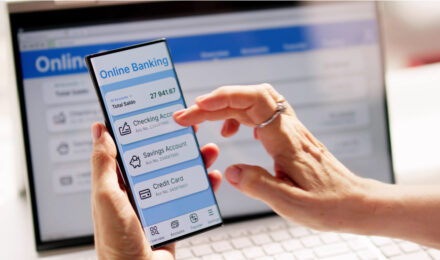When you consider refinancing, you might primarily think about lowering your monthly mortgage payments or getting a better interest rate. But refinancing can also be an effective way to make your home more eco-friendly. By using refinancing to invest in green upgrades like solar panels, improved insulation, and energy-efficient appliances, you can reduce your energy costs and significantly shrink your carbon footprint. Let’s explore how refinancing can help you create a greener, more sustainable home and save money in the long term.
Using Refinancing to Install Solar Panels
One popular way homeowners are going green is by installing solar panels. Generating your own electricity can be exciting and, in the long run, saves you from monthly energy bills. Solar power is clean, renewable, and decreases your reliance on fossil fuels. Plus, as utility costs rise, solar panels can yield substantial savings. However, the initial costs of solar panel installation can be steep.
Refinancing, specifically through a cash-out refinance, can help cover these expenses. Here’s how it works: if you owe $200,000 on your mortgage and your home is worth $300,000, you might refinance for $220,000 and use the additional $20,000 for solar panels. Although this raises your loan balance, reduced energy bills could offset this cost over time. Since solar panels have a long lifespan, this is a lasting investment that can pay off for years.
Improving Insulation for Greater Efficiency
While not the most glamorous home upgrade, insulation can greatly enhance energy efficiency. Poor insulation allows heat to escape in winter and cool air to leak out in summer, which forces your HVAC system to work harder. This increases energy consumption, leading to higher bills and a larger environmental footprint.
Revamping insulation across the house can be costly, but a cash-out refinance can provide the funds to upgrade to modern, energy-efficient materials. By borrowing a bit more on your mortgage, you can improve insulation to keep your home comfortable year-round. Eco-friendly insulation options like recycled cotton or cellulose make this upgrade even more environmentally responsible.
Upgrading to Energy-Efficient Appliances
Let’s talk about appliances. If your home has older, outdated models, they’re likely consuming more electricity and water than necessary. Upgrading to energy-efficient appliances can lower your utility bills and reduce environmental impact. For instance, an Energy Star refrigerator uses about half the electricity of a 15-year-old model. While these newer appliances can be pricey, refinancing can give you the funds needed for these upgrades without dipping into your savings.
Additional Green Home Upgrades to Consider
Beyond solar panels, insulation, and appliances, there are other eco-friendly upgrades you can fund through refinancing. For example, energy-efficient windows can make a huge difference in maintaining a stable indoor temperature. Older windows, especially single-pane ones, let drafts in, causing your heating and cooling systems to work harder. Replacing them with energy-efficient options keeps your home insulated, conserving energy and enhancing comfort.
Smart home technology is another excellent upgrade. Devices like smart thermostats and energy monitors allow you to control and track your home’s energy use. A smart thermostat can automatically adjust the temperature when you’re not home, reducing the workload on your HVAC system. These small improvements can collectively impact your energy bills over time.
Water efficiency is also worth considering. Low-flow toilets, faucets, and showerheads are relatively affordable upgrades that can significantly reduce water use. This saves on your water bill and helps conserve local water resources.
Long-Term Financial and Environmental Benefits
Refinancing to fund eco-friendly home improvements benefits both the planet and your finances. While the initial costs of these upgrades may seem high, they typically yield long-term savings through lower energy and water bills, as well as potential tax incentives for going green.
Moreover, these upgrades can increase your home’s market value. Buyers are often willing to pay more for homes with energy-efficient features. According to a report by the U.S. Department of Energy, homes with green upgrades can sell for up to 9% more than those without. For example, solar panels alone can boost a home’s value by an average of $15,000, depending on the region. Energy-efficient windows, insulation, and appliances are also appealing selling points, as they promise lower utility costs for future buyers. Additionally, homes with eco-friendly features tend to sell faster than those without, making your property more marketable.
In summary, investing in green home improvements through refinancing is a win for both your finances and the environment. You’ll reduce monthly bills, lower energy consumption, and make your home more comfortable—all while contributing to a more sustainable future. Next time you consider refinancing, think about how those extra funds could be used to create a greener, more energy-efficient home.
When you consider refinancing, you might primarily think about lowering your monthly mortgage payments or getting a better interest rate. But refinancing can also be an effective way to make your home more eco-friendly. By using refinancing to invest in green upgrades like solar panels, improved insulation, and energy-efficient appliances, you can reduce your energy costs and significantly shrink your carbon footprint. Let’s explore how refinancing can help you create a greener, more sustainable home and save money in the long term.
Using Refinancing to Install Solar Panels
One popular way homeowners are going green is by installing solar panels. Generating your own electricity can be exciting and, in the long run, saves you from monthly energy bills. Solar power is clean, renewable, and decreases your reliance on fossil fuels. Plus, as utility costs rise, solar panels can yield substantial savings. However, the initial costs of solar panel installation can be steep.
Refinancing, specifically through a cash-out refinance, can help cover these expenses. Here’s how it works: if you owe $200,000 on your mortgage and your home is worth $300,000, you might refinance for $220,000 and use the additional $20,000 for solar panels. Although this raises your loan balance, reduced energy bills could offset this cost over time. Since solar panels have a long lifespan, this is a lasting investment that can pay off for years.
Improving Insulation for Greater Efficiency
While not the most glamorous home upgrade, insulation can greatly enhance energy efficiency. Poor insulation allows heat to escape in winter and cool air to leak out in summer, which forces your HVAC system to work harder. This increases energy consumption, leading to higher bills and a larger environmental footprint.
Revamping insulation across the house can be costly, but a cash-out refinance can provide the funds to upgrade to modern, energy-efficient materials. By borrowing a bit more on your mortgage, you can improve insulation to keep your home comfortable year-round. Eco-friendly insulation options like recycled cotton or cellulose make this upgrade even more environmentally responsible.
Upgrading to Energy-Efficient Appliances
Let’s talk about appliances. If your home has older, outdated models, they’re likely consuming more electricity and water than necessary. Upgrading to energy-efficient appliances can lower your utility bills and reduce environmental impact. For instance, an Energy Star refrigerator uses about half the electricity of a 15-year-old model. While these newer appliances can be pricey, refinancing can give you the funds needed for these upgrades without dipping into your savings.
Additional Green Home Upgrades to Consider
Beyond solar panels, insulation, and appliances, there are other eco-friendly upgrades you can fund through refinancing. For example, energy-efficient windows can make a huge difference in maintaining a stable indoor temperature. Older windows, especially single-pane ones, let drafts in, causing your heating and cooling systems to work harder. Replacing them with energy-efficient options keeps your home insulated, conserving energy and enhancing comfort.
Smart home technology is another excellent upgrade. Devices like smart thermostats and energy monitors allow you to control and track your home’s energy use. A smart thermostat can automatically adjust the temperature when you’re not home, reducing the workload on your HVAC system. These small improvements can collectively impact your energy bills over time.
Water efficiency is also worth considering. Low-flow toilets, faucets, and showerheads are relatively affordable upgrades that can significantly reduce water use. This saves on your water bill and helps conserve local water resources.
Long-Term Financial and Environmental Benefits
Refinancing to fund eco-friendly home improvements benefits both the planet and your finances. While the initial costs of these upgrades may seem high, they typically yield long-term savings through lower energy and water bills, as well as potential tax incentives for going green.
Moreover, these upgrades can increase your home’s market value. Buyers are often willing to pay more for homes with energy-efficient features. According to a report by the U.S. Department of Energy, homes with green upgrades can sell for up to 9% more than those without. For example, solar panels alone can boost a home’s value by an average of $15,000, depending on the region. Energy-efficient windows, insulation, and appliances are also appealing selling points, as they promise lower utility costs for future buyers. Additionally, homes with eco-friendly features tend to sell faster than those without, making your property more marketable.
In summary, investing in green home improvements through refinancing is a win for both your finances and the environment. You’ll reduce monthly bills, lower energy consumption, and make your home more comfortable—all while contributing to a more sustainable future. Next time you consider refinancing, think about how those extra funds could be used to create a greener, more energy-efficient home.




